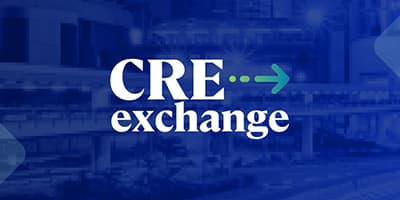Commercial real estate borrowers weigh-in on their experiences with non-bank lenders
Learn about commercial real estate borrower's expectations, recommendations, and challenges with working with non-bank lenders.

Key highlights
Non-bank borrowers report lower satisfaction levels with their CRE lenders compared to bank borrowers
Flexibility and service are top factors when non-bank borrowers are selecting a lender
Borrowers express a desire for greater efficiency and consistency from their lenders, as well as a desire to improve technologies and data solutions to expedite the borrowing process
Non-bank borrowers go through fewer steps to secure financing, but their deals tend to move more slowly with greater frustration directed at third-party participants
Non-bank borrowers express higher levels of concern about their abilities to manage and overcome a wide variety of daunting market risks and challenges they expect to face in the coming years
Finding the opportunities and gaps in the non-bank lending experience
Non-bank lenders have earned a reputation for stepping up to provide debt during periods of tight liquidity. The commercial real estate market saw a proliferation of debt funds and other private lenders following the Great Financial Crisis, and borrowers once again began leaning on alternative lenders as banks pulled back on CRE lending over the past two years.
Excluding commercial banks and agency loans from the likes of Fannie Mae and Freddie Mac, the “other” category of lenders including CMBS, life insurance companies, debt funds, REITs and various private equity sources hold a combined 40% of the more than $4.65 trillion in outstanding US commercial/multifamily mortgage debt, according to the Mortgage Bankers Association.
To gain insights into how bank and non-bank borrowers (NBBs) view debt markets, Altus Group’s latest research report, Lending for commercial property: The US Borrower's Perspective, takes a deeper dive into borrower sentiment related to key areas such as lender satisfaction, priorities for lender selection, how they view the lending process overall, and where there is room for improvement. The survey also gauges borrower sentiment on market trends and near-term outlook for their ability to access capital and navigate risks.
The research reveals key differences in the views of CRE financing depending on the type of borrower. Notably, NBBs are more pessimistic and dissatisfied than peers who are securing most or all of their financing from banks.
Lower satisfaction levels
Across all borrowers, survey respondents rate their overall satisfaction with lenders between a 7 and an 8 out of 10. However, NBBs tend to be slightly less satisfied with an average rating of 7.5 versus bank borrowers who rated bank lenders 8.3. Digging further into the type of lender, NBBs rated alternative lenders (such as hedge funds and private debt funds) the highest at 7.8, followed by CMBS lenders at 7.5, insurance companies at 7.0 and banks at 6.2.
Figure 1 - Overall satisfaction with lenders used in past two years: bank borrowers vs. non-bank borrowers

The very low levels of satisfaction with banks may be connected to the growing frustrations many of them cite about borrowing more generally.
“Five-plus years ago, lending for everything was super liquid or easy. I think today is just a tighter time, and the traditional lenders...are a lot more tight-fisted on the lending because they have their own capital concerns. So, it has made it difficult in the commercial real estate environment to get deals financed because traditional lenders have gotten very conservative.” - Chief Investment Officer, Family Office
Non-bank borrowers favor more personalized service
Altus research shows that borrowers perceive clear and meaningful differences in the nature of the partnership and service they expect to receive from each type of lender. Non-bank borrowers cited more personalized service, greater ease of securing loans / financing and greater lender stability as the top three benefits of working with non-bank lenders.
Figure 2 - Top benefits of working with non-bank lenders

Additionally, the survey asked borrowers questions about different types of non-bank lenders, including CMBS, life insurance companies, and various other “alternative” lenders, such as hedge funds and private equity firms. To drill down into key benefits borrowers associate with which types of non-bank lenders, we asked why they choose to work with their preferred lender type. Notably, nearly two-thirds of respondents cited greater flexibility and customization as a key benefit of working with CMBS and insurance company lenders. Other key themes emerging are summarized in figure 3.
Figure 3 – Key benefits of different types of non-bank lenders

Fewer steps but slower process
Survey results show that NBBs generally go through fewer steps when securing financing for a typical CRE transaction (6.3 vs. 8.4 for bank borrowers). This is likely due to the different regulatory landscape. Non-bank lenders also are significantly less likely to commission property appraisals / valuations, issue investment teasers, or gather and compare term sheets from potential lenders.
Despite going through fewer steps and involving fewer parties, non-bank lenders said that it often takes longer to get their deals to closing. Forty-five percent of NBBs said that it takes 1-3 months to complete a typical deal, while 42% said that it can take 4-5 months and another 13% said it could take 6-9 months. Borrowers agreed on the top issues that can delay or even derail a potential CRE loan deal as being overall deal complexity, new terms being introduced late in the process and high equity requirements.
Figure 4 – Biggest drivers of delays in CRE loan deals: bank borrowers vs. non-bank borrowers

Economic downturn perceived as biggest near-term concern
Looking ahead, more than half of all borrowers are cautiously optimistic about their ability to access sufficient funding for CRE projects over the next two to three years. However, a sizable group (31%) still describes themselves as somewhat pessimistic.
Topping the list of key worries for both groups are macroeconomic concerns, such as the possibility of an economic downturn or disruption, as well as continued increases in interest rates and inflation. In addition, NBBs are significantly more likely than bank borrowers to express concerns regarding a wide variety of risks such as regulatory requirements, insufficient loan guarantees, insufficient market data to benchmark CRE loans and increasing counterparty risks.
Figure 5 – Top risks & challenges for borrowers in the next two years: banks borrowers vs. non-bank borrowers

Leveraging diversification, technology to mitigate future risks
When asked about expectations for near-term risks and challenges to securing financing for CRE, NBBs were evenly split between those who expect challenges to remain consistent (38%) and those who expect to face greater difficulties in the years ahead (38%). Borrowers are considering a variety of strategies to mitigate perceived risks ahead.
Similar to bank borrowers, more than half of NBBs (55%) are planning to increase lender diversification and asset diversification (54%). NBBs also said they are more likely to
to make better use of advanced technologies and data solutions. Forty-two percent said they plan to increase their use of data science usage and capabilities, while 36% said they plan to automate or digitize manual processes to help overcome near-term risks and challenges.
Figure 6 – Strategies for overcoming near-term-risks & challenges

“Innovation-wise, I would say there is a pretty big thing in commercial real estate in general, and that is the use of big data. There are already some companies that have all sorts of different apps to help on the research front. So, they utilize big data, and that has helped to improve the valuation and the underwriting process for the market research process.” – VP of Investments, Commercial Real Estate Developer
As traditional lending channels tighten, borrowers are turning to non-bank lenders not just for financing but for the agility and tailored solutions they offer. Yet, these relationships come with their own set of challenges, from cost concerns to negotiating terms.
For lenders, this presents an opportunity to differentiate themselves by addressing these pain points and strengthening borrower relationships.
For more insights into the non-bank borrower experience and their challenges, preferences, and strategies, download Lending for commercial property – The US borrower’s perspective today.
Want to be notified of our new and relevant CRE content, articles and events?
Author

Altus Group
Author

Altus Group
Resources
Latest insights





